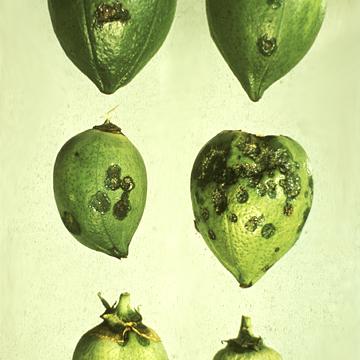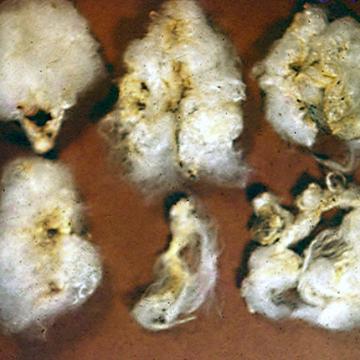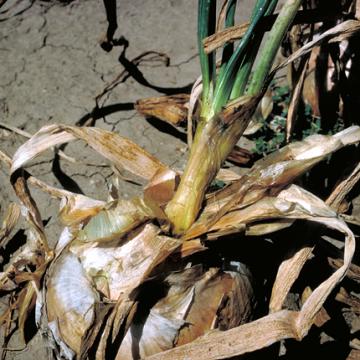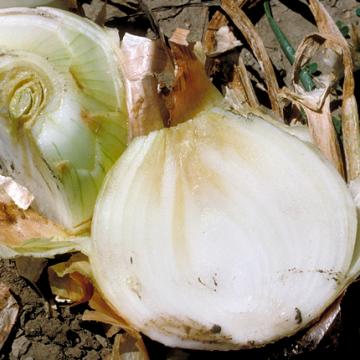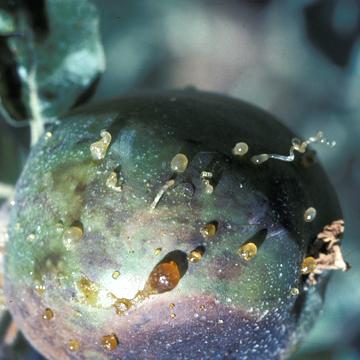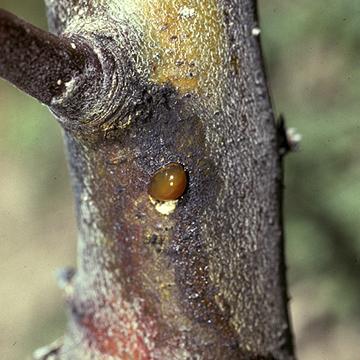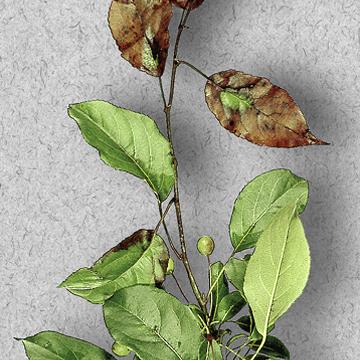DISEASE: Bacterial blight (Boll rot)
HOST: Cotton
Boll rot first appears as raised, water-soaked lesions, which become sunken and turn brown to black with time.
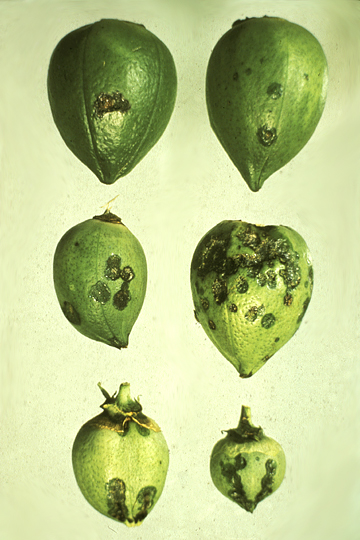
Bacterial blight (Boll rot) | Cotton
DISEASE: Bacterial blight (Boll rot)
HOST: Cotton (Gossypium barbadense)
PATHOGEN: Xanthomonas citri subsp. malvacearum
PATHOGEN SYNONYM: Xanthomonas campestris pv. malvacearum
SOURCE: A. Hayward
DISEASE: Bacterial blight (Boll rot)
HOST: Cotton
Infection of bolls causes premature opening and increased susceptibility to secondary, saprophytic microorganisms that cause rot. Note discolored cotton.
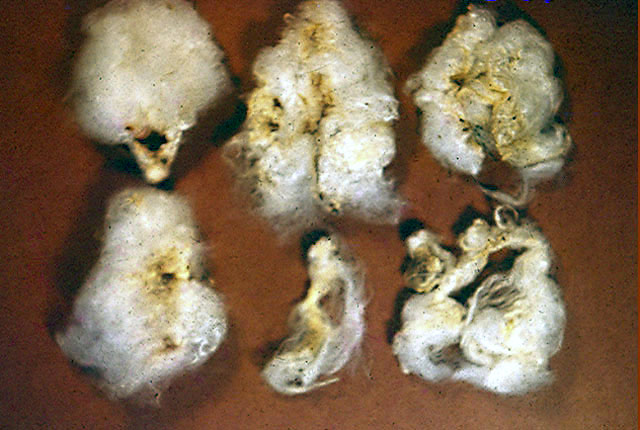
Bacterial blight (Boll rot) | Cotton
DISEASE: Bacterial blight (Boll rot)
HOST: Cotton (Gossypium barbadense)
PATHOGEN: Xanthomonas citri subsp. malvacearum
PATHOGEN SYNONYM: Xanthomonas campestris pv. malvacearum
SOURCE: APS
DISEASE: Center rot
HOST: Onion
Early symptoms of disease are necrotic, bleached areas on young leaves that typically wilt.

Center rot | Onion
DISEASE: Center rot
HOST: Onion (Allium cepa)
PATHOGEN: Pantoea ananatis
SOURCE: R. Gitaitis
DISEASE: Center rot
HOST: Onion
Advanced stage of center rot. The bacterium has moved down from leaves into the bulb.
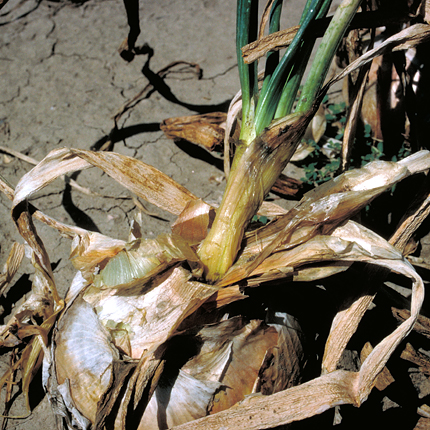
Center rot | Onion
DISEASE: Center rot
HOST: Onion (Allium cepa)
PATHOGEN: Pantoea ananatis
SOURCE: H. Schwartz
DISEASE: Center rot
HOST: Onion
Bulb with pale yellow, discolored decayed area.
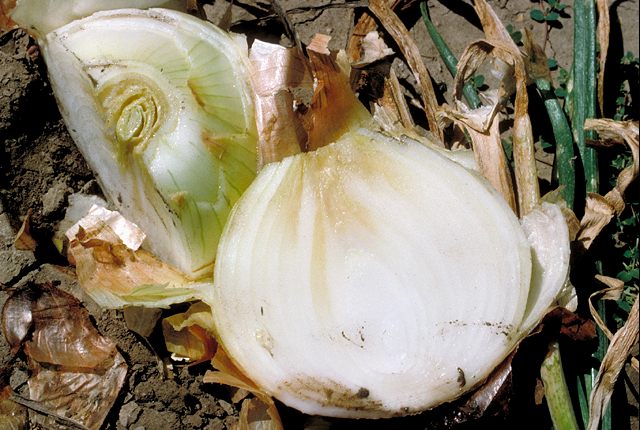
Center rot | Onion
DISEASE: Center rot
HOST: Onion (Allium cepa)
PATHOGEN: Pantoea ananatis
SOURCE: H. Schwartz
DISEASE: Fire blight
HOST: Apple
Severe infection of apple with dying twigs and branches.
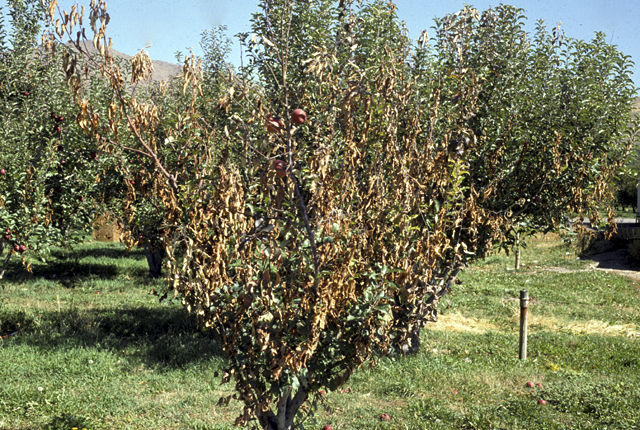
Fire blight | Apple
DISEASE: Fire blight
HOST: Apple (Malus domestica)
PATHOGEN: Erwinia amylovora
SOURCE: S. Thomson
DISEASE: Fire blight
HOST: Apple
Diseased apple with copious ooze.
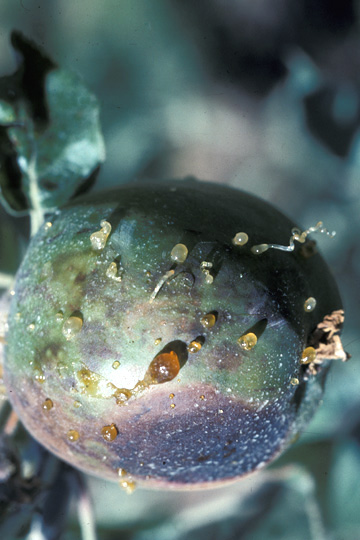
Fire blight | Apple
DISEASE: Fire blight
HOST: Apple (Malus domestica 'Jonathan')
PATHOGEN: Erwinia amylovora
SOURCE: S. Mohan
DISEASE: Fire blight
HOST: Apple
Canker on trunk oozing fire blight bacteria.

Fire blight | Apple
DISEASE: Fire blight
HOST: Apple (Malus domestica)
PATHOGEN: Erwinia amylovora
SOURCE: S. Thomson


